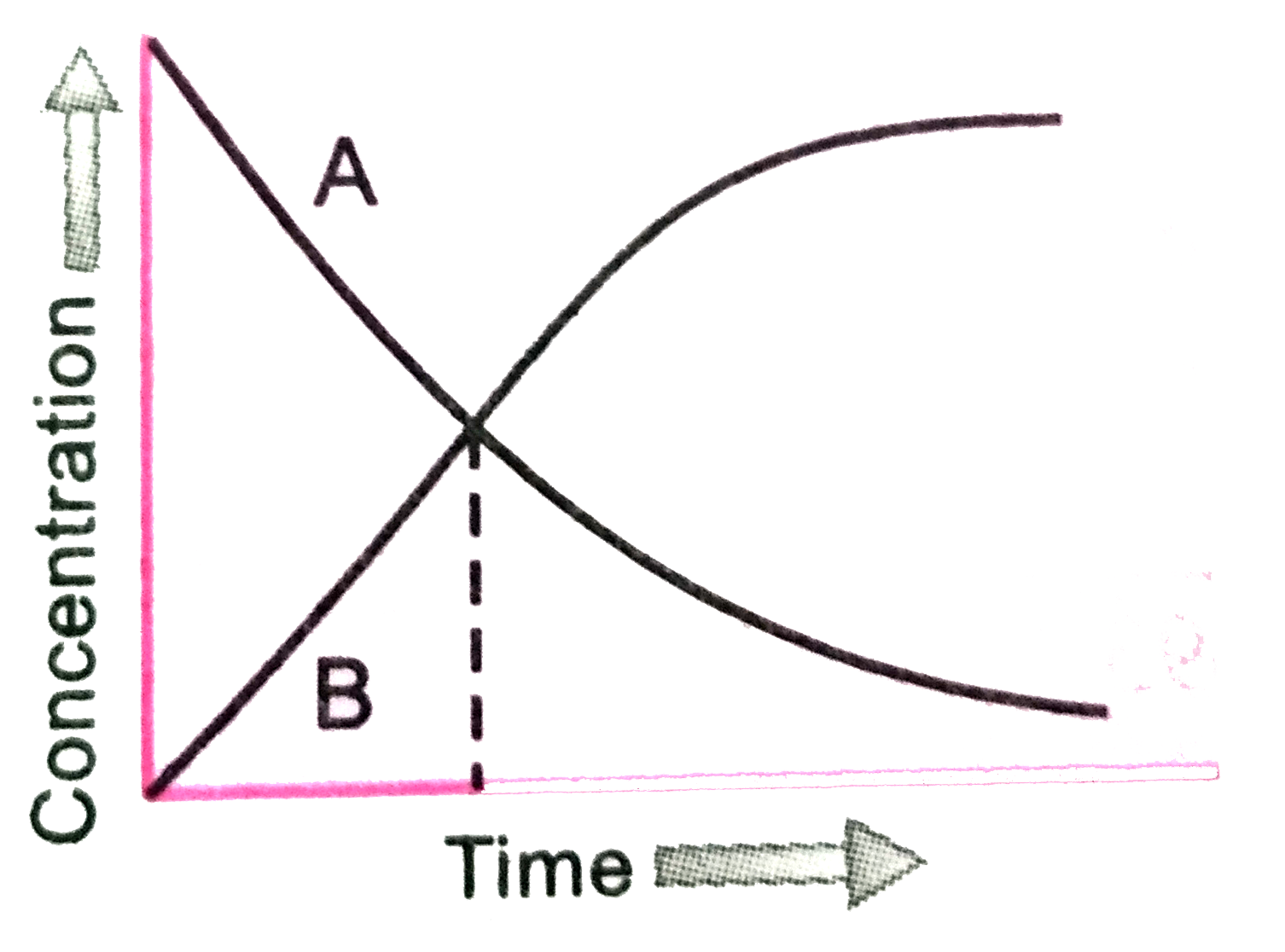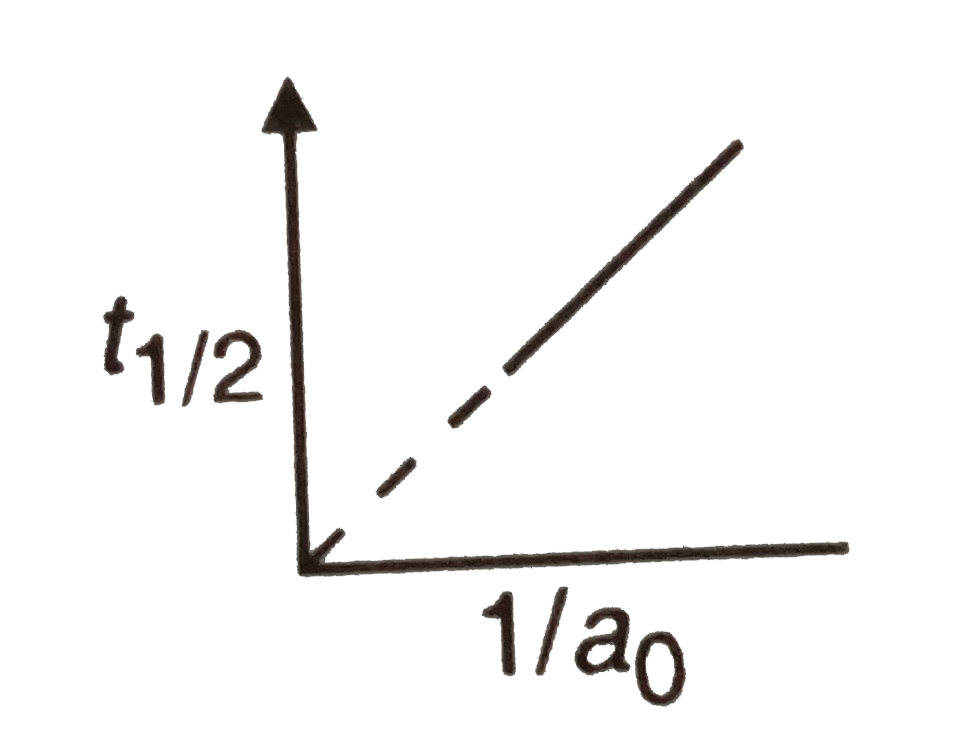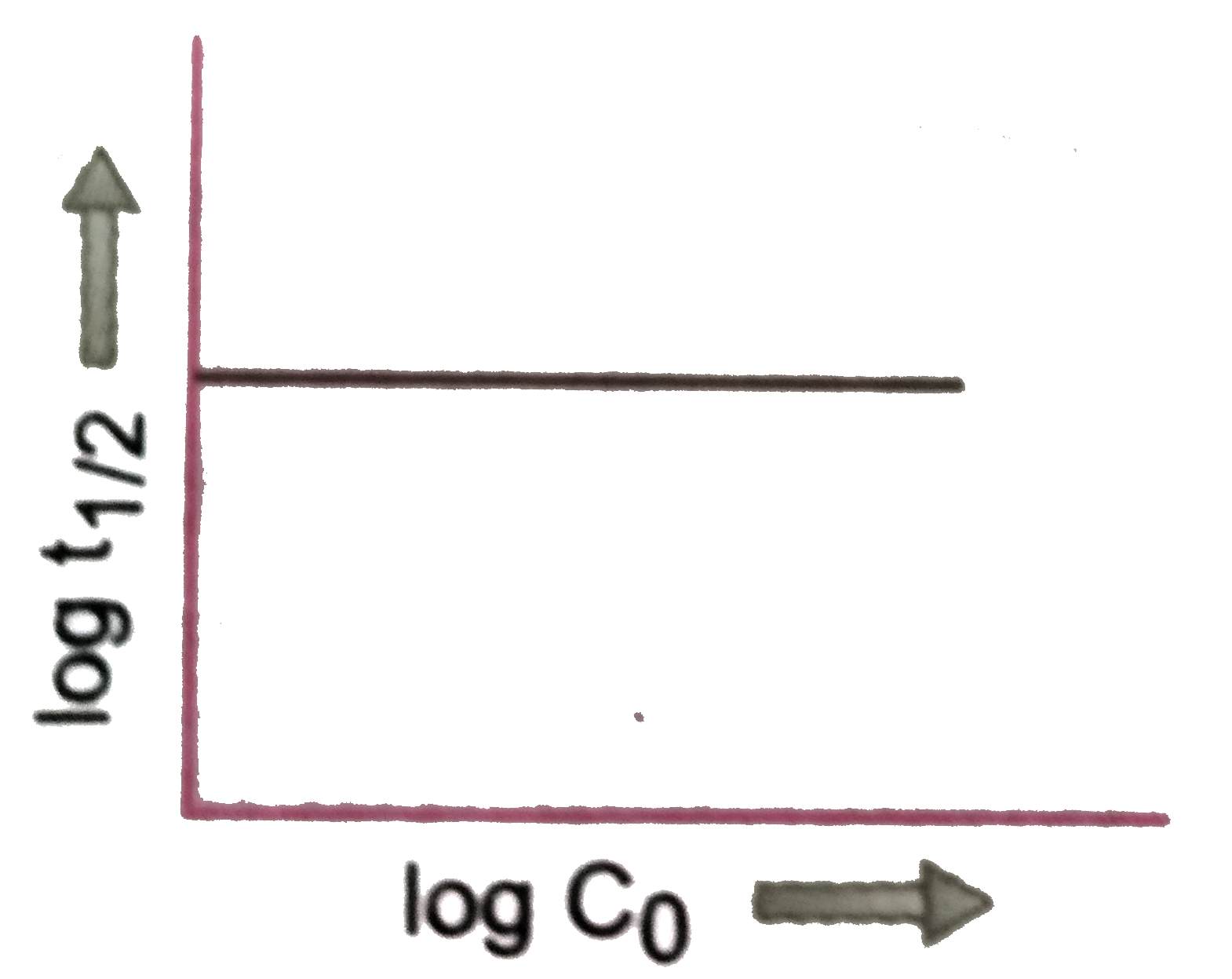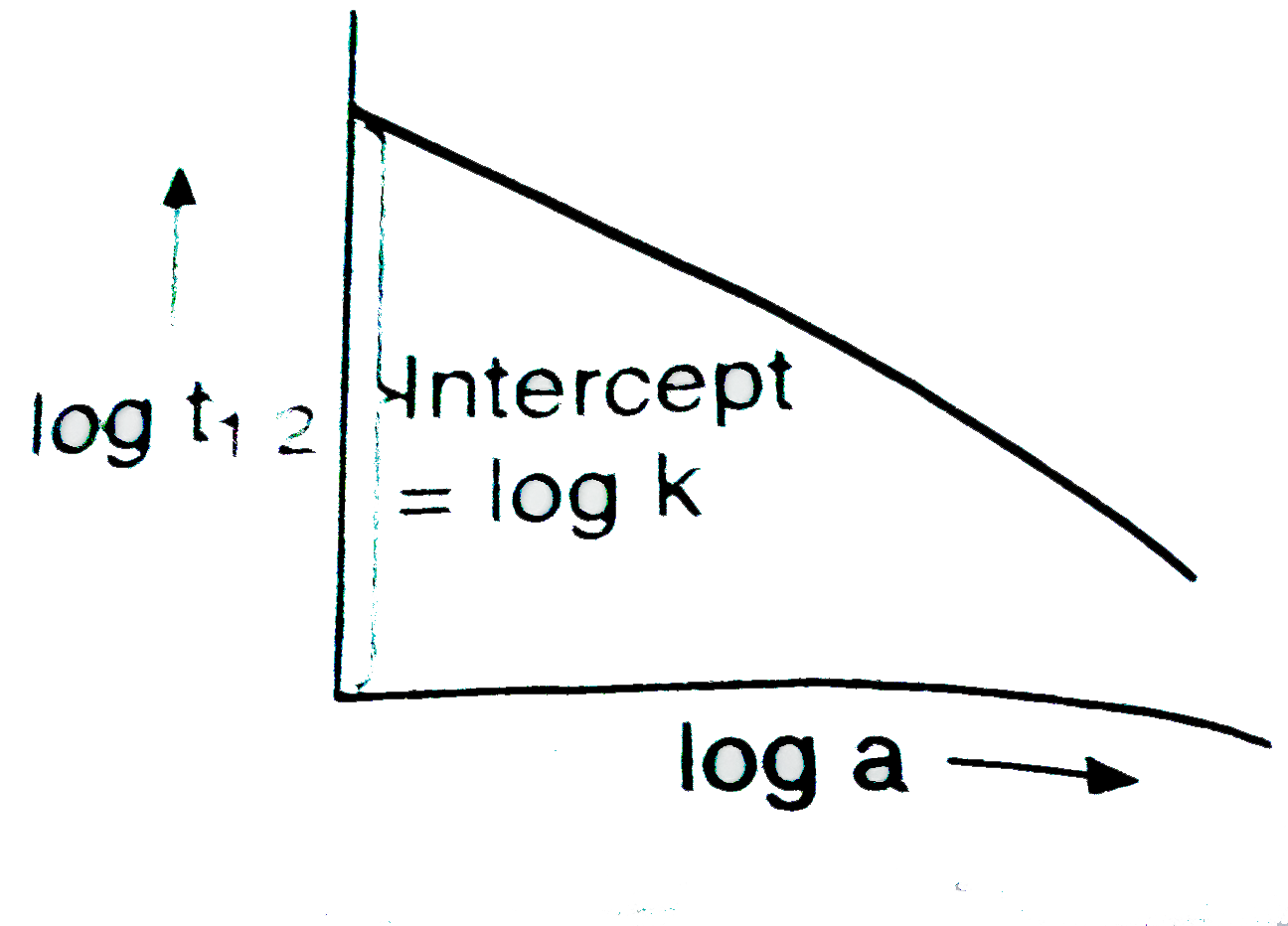Complete Solutions to COMPETITION FOCUS (JEE(Main and Advanced)/Medical Entrance) (I. Multiple Choice Questions) of chapter CHEMICAL KINETICS of Class 12 book with complete answers and questions
| Class 12 | CHEMISTRY |
| Chapter | CHEMICAL KINETICS |
| PRADEEP | COMPETITION FOCUS (JEE(Main and Advanced)/Medical Entrance) (I. Multiple Choice Questions) |
| Number Of Questions | 75 |
| Academic Year | 2023-24 |
In a catalytic experiment involving Haber's process, `N_(2)(g)+3" H"_(2)(g)to2" NH"_(3)(g)`, the rate of reaction was measured as : Rate `=(d[NH_(3)])/(dt)=2.0xx10^(-4)"M s"^(-1)`. If there were no side reactions, what was the rate of reaction expressed in terms of `N_(2)` ?
View SolutionThe decomposition of `N_(2)O_(5)` in `C Cl_(4)` at 318 K is studied by monitoring the concentration of `N_(2)O_(5)` in the solution. Initially, the concentration of `N_(2)O_(5)` is `2.4" mol L"^(-1)` and after 200 minutes, it is reduced to `2.00" mol L"^(-1).` What is the rate of production of `NO_(2)` during this period in `mol L"^(-1)"min"^(-1)` ?
View SolutionIn the synthesis of ammonia from nitrogen and hydrogen gases, if `6xx10^(-2)` mole of hydrogen disappears in 10 minutes, the number of moles of ammonia formed in 0.3 minutes is
View Solution`100" cm"^(3)" of "1" M "CH_(3)COOH` was mixed with `100" cm"^(3)" of "2" M "CH_(3)OH` to form an ester. The change in the initial rate if each solution is diluted with equal volume of water would be
View SolutionThe rate of a gaseous reaction is generally expressed in terms of `(dP)/(dt)`. If it were expressed in terms of change in number of moles per unit time `((dn)/(dt))` or in terms of change in molar concentration per unit time `((dC)/(dt))`, which of the following relationship will hold good ?
View SolutionIn a reversible reaction `2NO_(2)underset(k_(2))overset(k_(1))iffN_(2)O_(4)`, the rate of disappearance of `NO_(2)` is equal to
View SolutionThe rate law for a reaction between the substances A and B is given by
Rate = `k[A]^(n)[B]^(m)`
On doubling the concentration of A and halving the concentration of B, the ratio of the new rate to the earlier rate of the reaction will be as:
View SolutionConsider the decomposition of `N_(2)O_(5)` as
`N_(2)O_(5)rarr2NO_(2)+1//2O_(2)`
The rate of reaction is given by
`-(d[N_(2)O_(5)])/(dt)=(1)/(2)(d[NO_(2)])/(dt)=2(d[O_(2)])/(dt)`
`=k_(1)[N_(2)O_(5)]`
Therefore `(-d[N_(2)O_(5)])/(dt)=k_(1)[N_(2)O_(5)]`
`(+d[NO_(2)])/(dt)=2k_(1)[N_(2)O_(5)]=k_(1)[N_(2)O_(5)]`
`(+d[O_(2)])/(dt)=(1)/(2)k_(1)[N_(2)O_(5)]=k_(1)[N_(2)O_(5)]`
Choose the correct option
View SolutionThe rate constant is numerically the same for three reactions of first, second and third order respectively. Which one of the following is true for the rate of these reactions if concentration of the reactant is same and greater than 1 M ?
View SolutionFor the reaction,
`Ag^(+)+2" NH"_(3)iff["Ag"(NH_(3))_(2)]^(+),`
the net rate of reaction is given by
`(dx)/(dt)=2xx10^(7)["Ag"^(+)][NH_(3)]^(2)-1xx10^(-2)["Ag"(NH_(3))_(2)]^(+)`
Then which of the following statement/s is/are correct ?
View SolutionFor the reaction `A + B rarrC + D` , doubling the concentration of both the reactants increases the reaction rate by 8 times and doubling the concentration of only B simply doubles the reaction rate. Find the rate law for the above equation.
View SolutionIf rate `=k[H^(+)]^(n)` and it becomes 100 times when the pH changes from 2 to 1, then the order of reaction is
View SolutionA hypothetical reaction `A_(2) + B_(2) rarr 2AB` follows the mechanism as given below:
`A_(2) hArr A+A ("fast")`
`A+B_(2) rarr AB+B` (slow)
`A+B rarr AB` (fast)
The order of the overall reaction is
View SolutionHigher order `(gt3)` reaction are rare due to :
View SolutionMechanism of a hypothetical reaction
`X_(2) + Y_(2) rarr 2XY` is given below:
(i) `X_(2) rarr X + X` (fast)
(ii) `X+Y_(2) hArr XY+Y` (slow)
(iii) `X + Y rarr XY` (fast)
The overall order of the reaction will be :
View SolutionA first order reaction has a specific reaction rate of `10^(-2) s^(-1)`. How much time will it take for 20 g of the reactant to reduce to 5 g ?
View SolutionThe rate of the reaction `A rarr` products, at the initial concentration of `3.24 xx 10^(-2)M` is nine times its rate at another initial concentration of `1.2 xx 10^(-3)M`. The order of reaction is
View SolutionThe time for half life period of a certain reaction `A to ` Products is 1 hour. When the initial concentration of the reactant 'A', is `2.0" mol L"^(-1)`, how much time does it take for its concentration to come from `0.50" to "0.25" mol L"^(-1)`, how much time does it take for its concentration to come from `0.50" to "0.25" mol L"^(-1)` if it is a zero order reaction ?
View SolutionThe rate constant of the reaction `A to B` is `0.6xx10^(3)` mole per litre per second. If the concentration of A is 5 M, then concentration of B after 20 minutes is
View SolutionThe half life of a substance in a certain enzyme catalyzed reaction is 138s. The time required for the concentration of the substance to fall from `1.28 mg L^(-1) to 0.04 mg L^(-1)` :
View SolutionThe figure below depicts the change in the concentration of the species A and B for the reaction `A to B`, as a function of time. The point of intersection of the two curves represents

View SolutionThe plote between concentration versus time for a zero order reaction is represented by :
View SolutionIn the reaction,
`P+Q to R+S`, the time taken for `75%` reaction of P is twice the time taken for `50%` of the reaction of P. The concentration of Q varies with the reaction time as shown in the figure. The overall order of the reaction is

View SolutionA first order reaction is carried out starting with `10" mol L"^(-1)` of the reactant. It is `40%` complete in one hour. If the same reaction is carried out with an initial concentration of `5" mol L"^(-1)`, the percentage of the reaction that is completed in one hour will be
View SolutionHalf-lives of a first order and a zero order reaction are same. Then the ratio of the initial rates of the first order reaction to that of zero order reaction is
View SolutionFor a first order reaction, the time taken to reduce the initial concentration by a factor of `(1)/(4)` is 10 minutes. The time required to reduce initial concentration by a factor of `1//16` will be
View SolutionThe rate constant of a second order reactions
`2A rarr` Products, is `10^(-4) "lit mol"^(-1) "min"^(-1)`. The initial concentration of the reactant is `10^(-2) "mol lit"^(-1)`. What is the half life (in min) ?
View SolutionThe time taken for 10 % completion of a first order reaction is 20 minutes. Then for 19 % completion, the reaction will take
View SolutionThe following data is obtained during the first order thermal decomposition of
`2" A"(g)to" B"(g)+" C"(s)`
at constant volume and temperature

The rate constant in `"min"^(-1)` is
View SolutionRate constant of a reaction is `0.0693" min"^(-1)`. Starting with `10" mol L"^(-1)`, rate of reaction after 10 minutes will be
View SolutionFor the reaction ` A + 2B to ` C, the reaction rate is doubled if the concentration of A is doubled , the rate is increased by four times when concentrations of both A and B are increased by four times . The order of the reaction is _______.
View SolutionThe initial rates of reaction `3 A+ 2B +C rarr` products at different initial concentration are given below
`{:("Initial rate, MS"^(-1),|A_(0)|M,|B_(0)|M,|C_(0)|M),(5.0xx10^(-3),0.010,0.005,0.010),(5.0xx10^(-3),0.010,0.005,0.015),(1.0xx10^(-2),0.010,0.010,0.010),(1.25xx10^(-3),0.005,0.005,0.010):}`
The order of reaction with respect to the reacts A, B and C are respectively.
View SolutionAt 500 K, the half-life period of a gaseous reaction at the initial pressure of 80 kPa is 350 sec. When the pressure is 40 kPa, the half life period is 175 sec. The order of reaction is
View SolutionWhen initial concentration of a reactant is doubled in a reaction, its half-life period is not affected. The order of the reaction is
View SolutionThe following graph shows how `t_(1//2)` (half-life) of a reactant R changes with the initial reactant concentration `a_(0)`.
The order of reaction will be

View SolutionA reaction `P rarr Q` is completed 25 % in 25 min, 50 % completed in 25 min if [P] is halved, 25 % completed in 50 min if [P] is doubled. The order of reaction is
View Solution`t_(1//4)` can be taken as the time taken for concentration of reactant to drop to `.^(3)//_(4)` of its initial value. If the rate constant for a first order reaction is `K`, then `t_(1//4)` can be written as:
View SolutionA plot of log `t_(1//2)` versus log `C_(0)` is given in the adjoining fig. The conclusion that can be drawn from this graph is

View SolutionFor a reation: `A rarr` Product,
rate law is `-(d[A])/(dt)=K[A]_(0)`.
The concentration of `A` left after time `t` when `t=1/K` is:
View SolutionDecompsition of `H_(2)O_(2)` follows a frist order reactions. In 50 min the concentrations of `H_(2)O_(2)` decreases from 0.5 to 0.125 M in one such decomposition . When the concentration of `H_(2)O_(2)` reaches 0.05 M, the rate of fromation of `O_(2)` will be
View SolutionFor a first order reaction, the time required for `99.9%` of the reaction to take place is nearly
View SolutionThe half-life of a reaction is halved as the initial concentration of the reaction is doubled. The order of the reaction is
View SolutionA substance undergoes first order decomposition. The decomposition follows two parallel first order reactions as `k_(1)=1.26xx10^(-4)s^(-1), k_(2)=3.8xx10^(-5)s^(-1)` The percentage distribution of B and C are

View SolutionFor a second order reaction, `2Ararr` Products, a plot of log `t_(1//2)` vs log a (where a is initial concentration) will give an intercept equal to which one of the following?

View SolutionUnder the same reaction conditions, the intial concentration of `1.386 mol dm^(-3)` of a substance becomes half in `40 s` and `20 s` theough first order and zero order kinetics, respectively.
The ratio `(k_(1)//k_(0))` of the rate constants for first order `(k_(1))` and zero order `(k_(0))` of the reaction is
View SolutionIn the catalysed decomposition of benzene diazonium chloride,

half-life period is found to be independent of the initial concentration of the reactant. After 10 minutes, the volume of `N_(2)` gas collected is 10 L and after the reaction is complete, it is 50 L. Hence, rate constant of the reaction (in `"min"^(-1)`) is
View SolutionKinetics of the reaction `A (g)to 2" B"(g)+C(g)` is followed by measuring the total pressure at different times. It is given that
Initial pressure of A = 0.5 atm.
Total pressure of A after 2 hours = 0.7 atm.
Rate constant of the reaction `=1xx10^(-3)s^(-1)`
What is the rate of reaction `-(d[A])/(dt)` when the total pressure is 0.7 atm ?
View SolutionFor the non-stoichiometric reaction :
`2" A"+"B "to" C"+"D "`, the following kinetic data were obtained in three separate experiments all at 298 K

The rate law for the formation of C is
View SolutionFor the elementary reaction `MrarrN`, the rate of disappearance of `M` increases by a factor of `8` upon doubling the concentration of `M`. The order of the reaction will respect to `M` is
View SolutionThe rate of a first-order reaction is `0.04 "mol L"^(-1) s^(-1)` at `10` seconds and `0.03 "mol L"^(-1) s^(-1)` at `20` seconds after initiation of the reaction. The hlaf-life period of the reaction is :
View SolutionFor the first-order reaction `T_(av)` (average life), `T_(50)` and `T_(75)` in the increasing order are :
View SolutionIn the study of inversion of sucrose in presence of acid, if `r_(0),r_(1)" and "r_(oo)` represent the polarimetric readings at times 0, t and `oo` respectively, then at the `50%` inversion, which of the following relationship will hold good ?
View SolutionNumber of natural life times `(T_(av))` required for a first order reaction to achieve `99.9%` level of comletion is
View SolutionHalf-life period of a first order reaction is 100 min. After 144.3 min, concentration of reactant is reduced to … of the original concentration
View SolutionThe activation energy of a reaction can be determined from the slop of which of the following graph ?
View SolutionThe rate of a reaction doubles when its temperature changes form `300 K` to `310 K`. Activation energy of such a reaction will be:
`(R = 8.314 JK^(-1) mol^(-1) and log 2 = 0.301)`
View SolutionThe rate constant of a first orrder reaction becomes six times when the temperature is raised from 350 K to 400 K. Calculate the activation energy of the reaction `(R=8.314" JK"^(-1)" mol"^(-1))`
View SolutionA reactant `(A)` forms two products
`A overset (k_(1))rarr B`, Activation energy `E_(a1)`
`A overset (k_(2))rarr C`, Activation energy `E_(a2)`
If `E_(a_(2)) = 2E_(a_(1))` then `k_(1)` and `k_(2)` are related as
View SolutionIn the presence of catalyst, the activation energy of the reaction is lowered by 2 kcal at `27^(@)C`. The rate of reaction will increased by
View SolutionThe rate constant of a reaction at temperature 200 K is 10 times less than the rate constant at 400 K. What is the activation energy `(E_(a))` of the reaction ? (R = gas constant)
View SolutionThe formation of `H_(2)O_(2)` in the upper atmosphere follows the mechanism
`H_(2)O+Orarr2OH rarrH_(2)O_(2)`
`DeltaH=72 " kJ" " mol"^(-1), E_(a)=77 " kJ mol"^(-1)`
`E_(a)` for the backward process is
View SolutionFor an endothermic reaction, where `Delta H` represents the enthalpy of reaction in `kJ mol^(-1)`, the minimum value for the energy of activation will be
View SolutionWhen a catalyst increases the rate of a chemical reaction, the rate constant
View SolutionAn exothermic chemical reaction proceeds by two stages reactants `overset("Stage I")(rarr) "intermdediate" overset("Stage II")(rarr)` products, The activation energy of stage `I` is `50 kJ mol^(-1)`. The overall enthalpy change of the reaction is `-100 "kJ mol"^(-1)`. Which diagram could represent the energy level diagram for the reaction ?
View SolutionFor a reaction taking place in three steps, the rate consatnt are `k_(1),k_(2) and k_(3)`. The oveall constant `k=(k_(1)k_(2))/(k_(3)` . If the energy of activation values of for the first, second and third stage are 40,50 and 60 kJ `"mol"^(-1)` is :
View SolutionThe rate constant `k_(1)` and `k_(2)` for two different reactions are `10^(16) e^(-2000//T)` and `10^(15) e^(-1000//T)`, respectively. The temperature at which `k_(1) = k_(2)` is
View SolutionFor a first order reaction `ArarrP` , the temperature (T) dependent rate constant `(K)` was found to follow the equation log `k=-(2000)(1)/(T)+6.0` . The pre- exponential factor A and the activation energy `E_(a)` , respectively, are :
View SolutionPlots showing the variation of the rate constant `(k)` with temperature `(T)` are given below. The plot that follows the Arrhenius equation is
View SolutionThe activation energy for a reaction at temperature T K was found to be `2.303" RT J mol"^(-1)`. The ratio of the rate constant to Arrhenius factor is
View SolutionTwo reactions `R_(2) and R_(2)` have identical pre - exponential factors. Activations enery of `R_(1)` exceeds that of `R_(2)` by 10 kJ `mol_(-1)` . If `k_(1) and k_(2)` are rate constants for rate constants for reactions `R_(1) and R_(2)`
respectively at 300k , then In `(k_(2)/k_(1))`is equal to `(R=8.314 J mol^(-1)K^(-1))`
View SolutionWhich one of the following is not correct ?
View SolutionOne mole of `N_(2)O_(4)(g)` at 300 K is kept in a closed container under one atmosphere. It is heated to 600K when 20% by mass of `N_(2)O_(4)`(g) decomposes to `NO_(2)`(g). The resultant pressure is:
View SolutionConsider the following statements.
i) Increase in concentration of rectant increases the rate of a zero order reaction.
ii) rate constant k is equal to collision frequency a if `E_(a)=0`
iii) rate constant k is equal to collision frequency A if `E_(a) = infty`.
iv) In k vs T is a straight line.
v) In k vs `1//T` is a straight line.
Correct statements are:
View SolutionThe oxidation of certain metal is found to obey the equation `A^(2) =alphat+beta`, where `A` is the thickness of the oxide film at time `t, alpha` and `beta` are constants. What is the order of this reaction?
View SolutionThe decomposition of phosphine `[PH_(3)]` on tungsten at low pressure is a first-order reaction. It is because the
View Solution
COMPETITION FOCUS (JEE(Main and Advanced)/Medical Entrance) (I. Multiple Choice Questions) questions and complete solutions for chapter CHEMICAL KINETICS of PRADEEP CHEMISTRY (HINGLISH) of Class 12
All Exercises from PRADEEP Class 12 CHEMISTRY CHEMICAL KINETICS
- ADDITIONAL QUESTIONS (LONG ANSWER QUESTIONS)
- ADDITIONAL QUESTIONS (SHORT ANSWER QUESTIONS) I. General introduction and rates of reactions
- ADDITIONAL QUESTIONS (SHORT ANSWER QUESTIONS) II. Rate law, order of reaction, rate constant and its units
- ADDITIONAL QUESTIONS (SHORT ANSWER QUESTIONS) III. Molecularity, mechanism and difference between order and molecularity
- ADDITIONAL QUESTIONS (SHORT ANSWER QUESTIONS) IV. Integrated rate equations, half-life, determination of rate law, rate const, and order
- ADDITIONAL QUESTIONS (SHORT ANSWER QUESTIONS) V. First order reactions, pseudo first order reactions and reactions and radioactive disintegration
- ADDITIONAL QUESTIONS (SHORT ANSWER QUESTIONS) VI. Activation energy, effect of temp. on rate (Arrhenius eqn.) and effect of catalyst on rate
- ADDITIONAL QUESTIONS (SHORT ANSWER QUESTIONS) VII. Collision theory
- ADDITIONAL QUESTIONS (SHORT ANSWER QUESTIONS) VIII. Miscellaneous
- ADDITIONAL QUESTIONS (VERY SHORT ANSWER QUESTIONS) I. General introduction and rates of reactions
- ADDITIONAL QUESTIONS (VERY SHORT ANSWER QUESTIONS) II. Rate law, order of reaction, rate constant and its units
- ADDITIONAL QUESTIONS (VERY SHORT ANSWER QUESTIONS) III. Molecularity, mechanism and difference between order and molecularity
- ADDITIONAL QUESTIONS (VERY SHORT ANSWER QUESTIONS) IV. Integrated rate equations, half-life, determination of rate law, rate const. and order
- ADDITIONAL QUESTIONS (VERY SHORT ANSWER QUESTIONS) V. First order reactions, pseudo first order reactions and radioactive disintegration
- ADDITIONAL QUESTIONS (VERY SHORT ANSWER QUESTIONS) VI. Activation energy, effect of temp. on rate (Arrhenius eqn.) and effect of catalyst on rate
- ADDITIONAL QUESTIONS (VERY SHORT ANSWER QUESTIONS) VII. Collision theory
- ADVANCED PROBLEMS FOR COMPETITIONS
- COMPETITION FOCUS (JEE(Main and Advanced)/Medical Entrance) (VI. Integer Type Questions)
- COMPETITION FOCUS (JEE(Main and Advanced)/Medical Entrance) (VII. Assertion-Reason Type Questions) Type - I
- COMPETITION FOCUS (JEE(Main and Advanced)/Medical Entrance) (VII. Assertion-Reason Type Questions) Type - II
- COMPETITION FOCUS (IV. Matching Type Questions)
- COMPETITION FOCUS (JEE(Main and Advanced)/Medical Entrance) (IV. Matching Type Questions)
- COMPETITION FOCUS (JEE(Main and Advanced)/Medical Entrance) (V. Matrix-Match Type Questions)
- COMPETITION FOCUS (JEE(Main and Advanced)/Medical Entrance) (I. Multiple Choice Questions)
- COMPETITION FOCUS (JEE(Main and Advanced)/Medical Entrance) (I. Multiple Choice Questions) (III. Multiple Choice Questions) Based on Comprehension
- COMPETITION FOCUS (JEE(Main and Advanced)/Medical Entrance) (I. Multiple Choice Questions) With one or more than one correct answers
- COMPETITION FOCUS (JEE(Main and Advanced)/Medical Entrance) (II. Multiple Choice Questions)
- COMPETITION FOCUS (JEE(Main and Advanced)/Medical Entrance) (VI. Integer Type Questions)
- COMPETITION FOCUS (JEE(Main and Advanced)/Medical Entrance) (VIII. Multiple Choice Questions)
- COMPETITION FOCUS (V. Matrix-Match Type Questions)
- CONCEPTUAL QUESTIONS (I. General introduction and rates of reactions)
- CONCEPTUAL QUESTIONS (II. Rate law, order of reaction, rate constant and its units)
- CONCEPTUAL QUESTIONS (III. Molecularity of a reaction, its mechanism and difference between order and molecularity)
- CONCEPTUAL QUESTIONS (IV. Integrated rate equations, half-life, determination of rate law, rate constant and order)
- CONCEPTUAL QUESTIONS (V. First order reactions, pseudo first order reactions and radioactive disintegration)
- CONCEPTUAL QUESTIONS (VI. Activation energy, effect of temp. on rate (Arrhenius eqn.) and effect of catalyst on rate)
- CONCEPTUAL QUESTIONS (VII. Collision theory)
- CURIOSITY QUESTION
- HIGHER ORDER THINKING SKILLS (QUESTIONS AND PROBLEMS WITH ANSWERS/SOLUTIONS) HOTS PROBLEMS
- HIGHER ORDER THINKING SKILLS (QUESTIONS AND PROBLEMS WITH ANSWERS/SOLUTIONS) HOTS QUESTIONS
- IMPORTANT QUESTIONS FOR BOARD EXAMINATION
- NCERT EXEMPLAR PROBLEMS WITH ANSWERS, HINTS AND SOLUTTIONS (ASSERTION AND REASON TYPE OUESTIONS)
- NCERT EXEMPLAR PROBLEMS WITH ANSWERS, HINTS AND SOLUTTIONS (ASSERTION AND REASON TYPE QUESTIONS)
- NCERT EXEMPLAR PROBLEMS WITH ANSWERS, HINTS AND SOLUTTIONS (LONG ANSWER QUESTIONS)
- NCERT EXEMPLAR PROBLEMS WITH ANSWERS, HINTS AND SOLUTTIONS (MATCHING TYPE QUESTIONS)
- NCERT EXEMPLAR PROBLEMS WITH ANSWERS, HINTS AND SOLUTTIONS (MULTIPLE CHOICE QUESTIONS-1)
- NCERT EXEMPLAR PROBLEMS WITH ANSWERS, HINTS AND SOLUTTIONS (MULTIPLE CHOICE QUESTIONS-II)
- NCERT EXEMPLAR PROBLEMS WITH ANSWERS, HINTS AND SOLUTTIONS (SHORT ANSWER QUESTIONS)
- NCERT EXERCISES
- NCERT QUESTIONS AND EXERCISES WITH ANSWERS (NCERT INTEXT UNSOLVED QUESTIONS & PROBLEMS)
- PROBLEM
- PROBLEMS FOR PRACTICE
- TEST YOUR GRIP (FILL IN THE BLANK)
- TEST YOUR GRIP (MULTIPLE CHOICE QUESTIONS)
- VALUE BASED QUESTIONS (WITH ANSWERS)